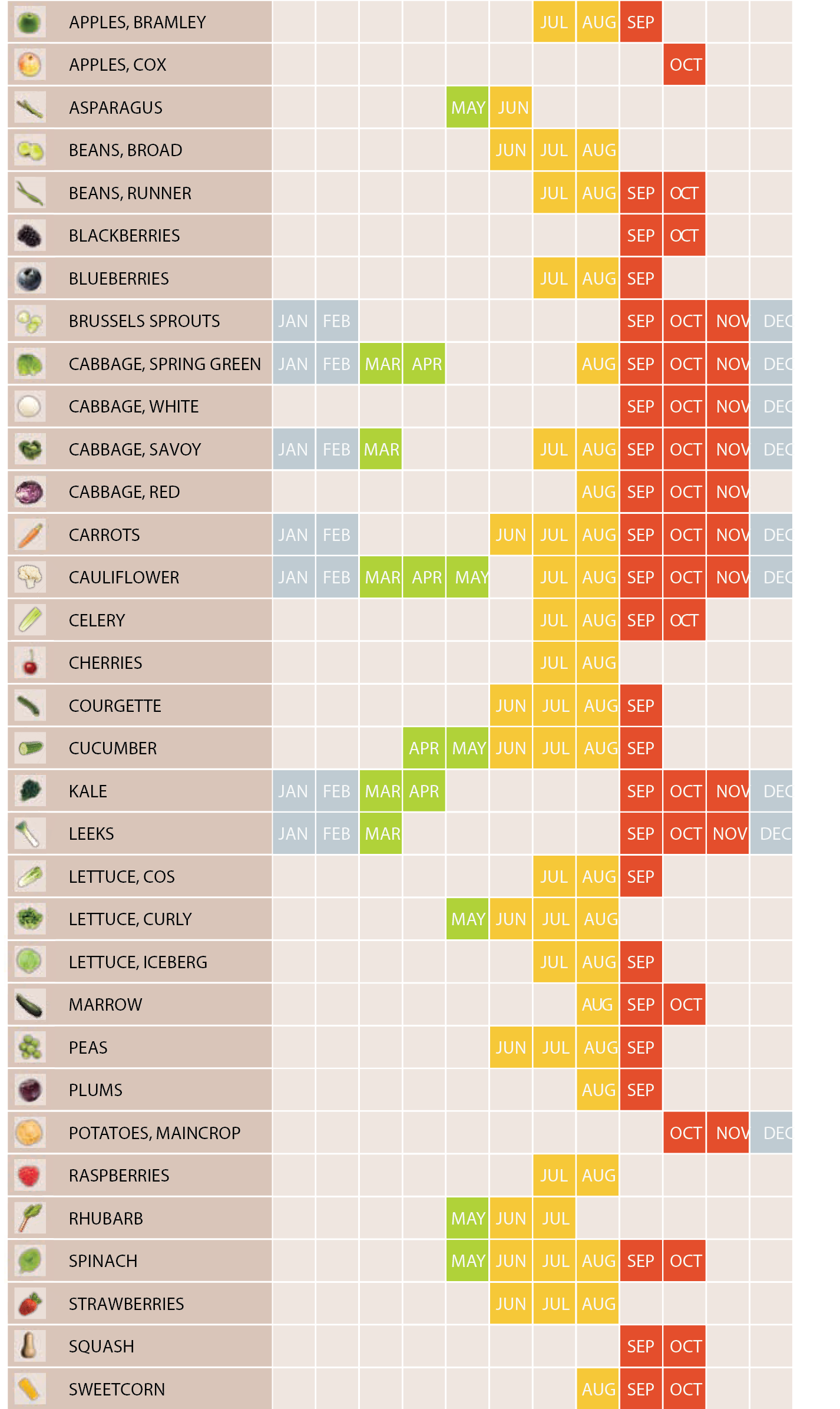Foods in Season

The Eat Seasonably Calendar
This helpful calendar and an additional graphic wheel by season can be downloaded as a poster by clicking here. For further information on this calendar, please visit https://eatseasonably.co.uk.
What are the benefits of Eating Foods in Season?
Every month you should celebrate a food that is in season because that is when your children and you get the most flavor and nutritional value and when it is the most affordable. For the greatest freshness look for foods that are locally grown and are in season.
Quick Guides for Eating Seasonally
Spring
Focus on tender, leafy vegetables that represent the fresh new growth of this season. The greening that occurs in springtime should be represented by greens on your children’s plate, including Swiss chard, spinach, Romaine lettuce, fresh parsley, and basil.
Summer
Stick with light, cooling foods. These foods include fruits like strawberries, apple, pear, and plum; vegetables likesummer squash, broccoli, cauliflower, and corn; and spices and seasonings like peppermint, rosemary, sage and cilantro.
Fall
Turn toward the more warming, autumn harvest foods, including carrot, sweet potato, onions, and garlic. Also emphasize the more warming spices and seasonings including ginger, peppercorns, and mustard seeds.
Winter
turn even more exclusively toward warming foods. Remember the principle that foods taking longer to grow are generally more warming than foods that grow quickly. All of the animal foods fall into the warming category including fish, chicken, beef, lamb, and venison. So do most of the root vegetables, including carrot, potato, onions and garlic. Eggs also fit in here, as do cornand nuts.


